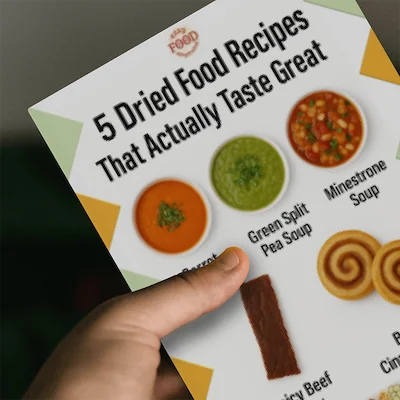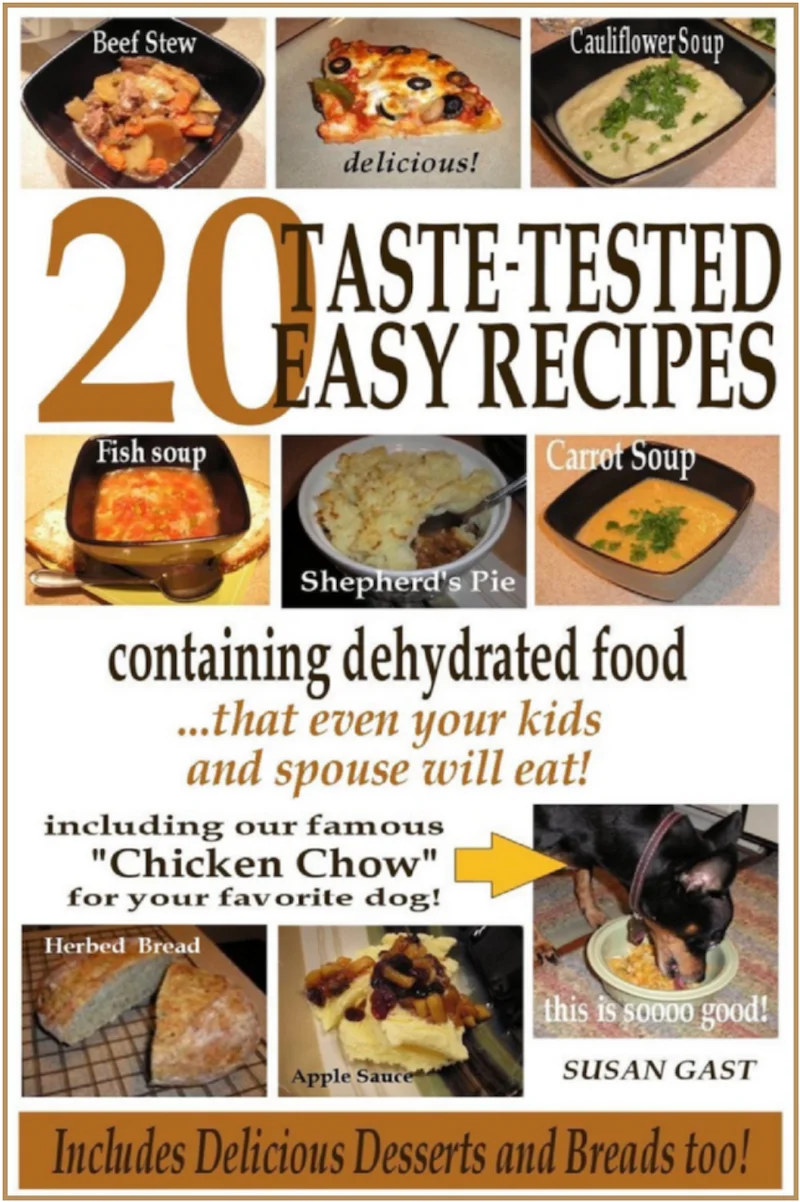What We Mean by “Dehydrate”
Here at Easy Food Dehydrating, “dehydrate” always means using an electric food dehydrator — the easy, reliable way to dry food at home.
- Home
- Easy Dehydrated Food Recipes
- Tuna Pasta Bake Recipe
Classic Tuna Pasta Bake –
A Cheesy & Crispy Comfort Dish

Craving a warm, cheesy dinner that’s both easy and satisfying? This tuna pasta bake is the ultimate comfort food—perfect for busy weeknights or when you need a hearty meal that the whole family will love.
✅ Quick Answer: What is the best way to make a tuna pasta bake?
The best tuna pasta bake combines cooked pasta, canned tuna, tomatoes, herbs, and a creamy sauce, all baked under a layer of melted cheese and crispy breadcrumbs. It’s quick, budget-friendly, and delivers a hearty, family-friendly dinner in under an hour.
Tender pasta, flaky tuna, and a creamy tomato sauce come together under a golden, crunchy cheese topping. It’s simple to make, budget-friendly, and guaranteed to hit the spot every time.
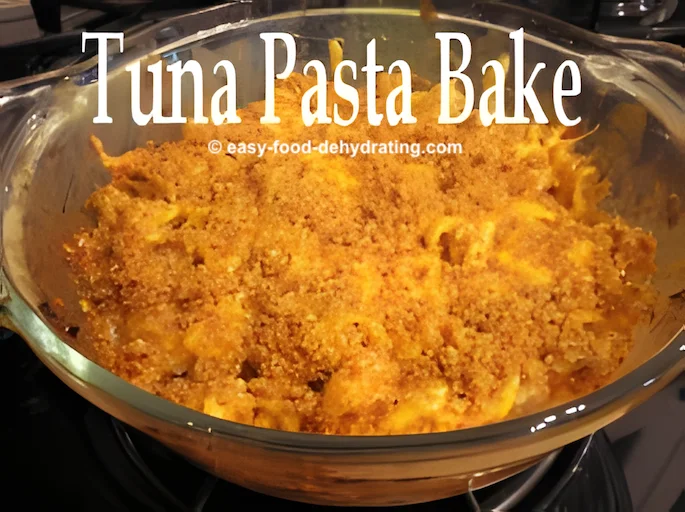

Tuna Pasta Bake Recipe
Ingredients You’ll Need for the Base
- 2 cans tuna in water
- 1/4 cup dehydrated onion
-
3 large slices dehydrated elephant garlic (read additional info. on elephant garlic at the bottom of this post)
- handful dehydrated mushrooms
- 1 14.5 oz. can small-diced tomatoes
- 4 oz. whole-wheat rotini (the spiral pasta!)
- 2 teaspoons of vegetable stock to flavor the pasta cooking water and a tablespoon of red wine (optional)
- Italian dried herbs—a good pinch or two to taste
- olive oil as needed
- 4 oz. crème fraîche, (or plain yogurt, or sour cream)
- dash of black pepper
The Cheesy & Crispy Topping
- 4 oz. approx. coarse shredded sharp cheddar cheese
- 2 slices bread, made into bread crumbs
How to Make Tuna Pasta Bake (Step-by-Step)
- Rehydrate the onion, garlic, and mushrooms in a jug of cold water.
- Drain the tuna as best you can in the kitchen sink. Use a sieve.
- Cook the pasta in the vegetable stock for TEN minutes, no more! Drain, and place in an oven-safe dish.
- While the pasta is cooking, in a saucepan with about a tablespoon or two of olive oil, fry your breadcrumbs until golden and crisp. Takes a couple of minutes. Remove from pan and put aside in a small dish.
- In the now-empty saucepan, add about 2 tablespoons olive oil, and sauté the onion, garlic, and mushrooms until soft.
- Add the can of tomatoes, and Italian herbs to taste. Also add black pepper to taste. Simmer for ten minutes.
- Add the two cans of tuna to the pasta and combine—breaking up the bigger tuna pieces. Add the sauce.
- Next, add the crème fraîche (or sour cream, or plain yogurt), and stir gently!
- Smooth out the pasta and sauce, and add the grated cheese as a layer.
- Add the breadcrumbs on top of the cheese.
- Bake, uncovered, at 350°F for 30 minutes.
💡 Tip: Outside the U.S.? Most dehydrating temps here are listed in Fahrenheit - use our quick converter to see the Celsius equivalent for your machine.
Nutrition Information
- Servings: 8 servings
- Calories: 211kcals
- Fat: 9g
- Protein: 14.5g
- Carbohydrates: 19g

Fresh Ingredient Swaps (Onions, Garlic & Mushrooms)
If you want to use fresh ingredients that you may have on hand, do this:
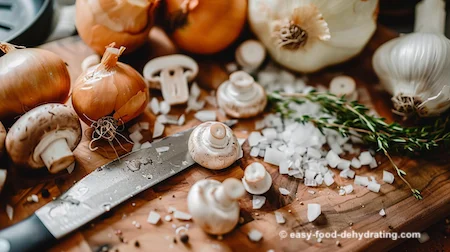
Exchange the dry ingredients in the recipe, above, for these fresh ingredients listed below!
- 1/2 large onion, peeled and diced
- 3 slices fresh elephant garlic, or 1 and 1/2 to 2 cloves of "regular sized" garlic
- 1 cup fresh sliced mushrooms
20 Taste-Tested Easy Recipes
🍕 Pizza! 🥧 Shepherd's Pie! 🥘 Beef Stew! plus
Cauliflower Soup and Cauliflower Mash, along with crazy Carrot Soup!
Decadent Desserts: Carrot Cake and Cranberry Pineapple Pie!
and more...
Fresh food ingredient amounts are included for when you have fresh food on hand.
See which recipes are included here.
Elephant Garlic vs. Regular Garlic: What’s the Difference?
Here are some key differences between regular garlic and elephant garlic, along with additional facts:
- Regular garlic (Allium sativum) has a bulb composed of multiple small cloves encased in a papery skin. Elephant garlic (Allium ampeloprasum) has much larger cloves, around 4-6 per bulb, with thicker skin.
- Elephant garlic has a milder, more delicate garlic flavor compared to regular garlic which is generally more pungent and intense.
- The cloves and bulbs of elephant garlic can be around 2-3 times the size of regular garlic cloves. An elephant garlic bulb can weigh up to 100 grams whereas a regular bulb is around 15-20 grams.
- Elephant garlic is actually more closely related to leeks than regular garlic. It belongs to the same species as leeks and other alliums instead of being a true Allium sativum.
- Regular garlic provides more health benefits since it contains higher levels of compounds like allicin that are responsible for many of garlic's medicinal properties.
- In cooking, elephant garlic can provide a subtle garlicky flavor to dishes without overpowering them. It can be used similarly to regular garlic but often needs more to provide ample flavor.
- Elephant garlic has a much shorter shelf life than regular garlic due to its larger cloves. Proper storage like drying and refrigeration helps extend its life.
- Both types of garlic can be grown as crops in similar conditions, though elephant garlic takes several months longer to fully mature compared to regular garlic.
- Elephant garlic has a fibrous stalk rising from the bulb, unlike the stiff central stem of a regular garlic bulb. The stalk is sometimes sliced and eaten along with the cloves.
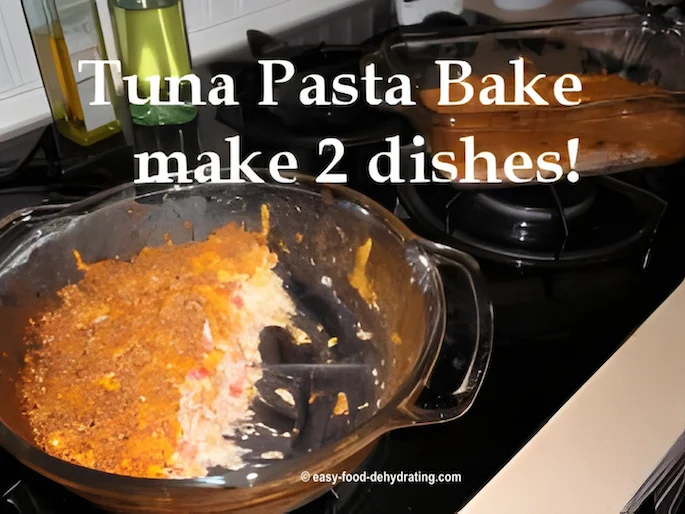
The Story Behind This Tuna Pasta Bake
This fantastic tummy-pleasing dish came to us from Grandpa Yogi, otherwise known as John, in Derbyshire, UK! Thanks for sharing this fantastic dish with us, John!
He says, "There's nothing like the sound of the breadcrumbs' crunch as your spoon dips down into the creamy pasta." And we couldn't agree more. This Tuna Pasta Bake is now on our family's favorite food list!
Our test kitchen (yeah, right... meaning "me") cooked this up from 'start to eaten' in about an hour—plus there really is plenty enough to have two separate dishes—and the 2nd dish was devoured by my parents :-) I'm such a good daughter!
A Fun Side Note: John’s Garden Project
John visited our home back in 2012, and he helped me and my hubby tremendously in the garden. How so? He helped create a compost bin out of lumber found on the property (likely from an old fence!)
Words of wisdom: Don't make a compost bin too close to your home. You don't want to be able to smell it! Read more about John's Compost Bin in our garden here.
Your Tuna Pasta Bake Questions, Answered
Can I make tuna pasta bake ahead of time?
Can I make tuna pasta bake ahead of time?
Yes! Assemble the bake up to the cheese-and-breadcrumb topping step, cover, and refrigerate for up to 24 hours. Bake when ready to serve.
What can I use instead of crème fraîche in tuna pasta bake?
What can I use instead of crème fraîche in tuna pasta bake?
You can swap crème fraîche with sour cream, plain yogurt, or even cream cheese for a similar creamy texture.
Can I freeze tuna pasta bake?
Can I freeze tuna pasta bake?
Absolutely. Cool completely, wrap tightly, and freeze for up to 3 months. Reheat in the oven until hot and bubbly.
Thanks for stopping by to check out this Tuna Pasta Bake recipe! It’s one of those easy, cozy meals that never goes out of style.
If you enjoyed this dish, you’ll love my free 5 Dried Food Recipes You'll Actually Love PDF—featuring carrot soup, minestrone soup, split pea soup, spicy beef jerky, and even banana cinnamon rolls. Grab it below and keep your meal ideas fresh and fun!
Get 5 Dried Food Recipes You'll Actually Love
Here's where you can get your copy of our all new
5 Dried Food Recipes (That Actually Taste Great)
They're my all-time favorite easy dried food meals!
Get it here right now.
For Free!
Before You Go...
If you enjoyed this page, tap the ❤️ in the lower right-hand corner.
It saves this page to your Grow bookmarks so you can find it again later.
You’ll also see quick share buttons to copy the link, post to Facebook,
or save it straight to Pinterest.


